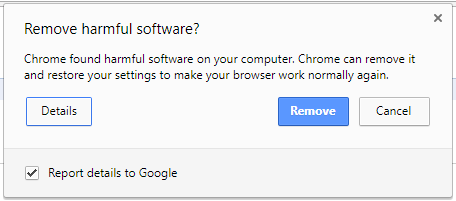Last Updated on October 16, 2017 by Mathew Diekhake
Unwanted software impacts the browsing experience of millions of web users every day. Effects of this harmful software are often quite subtle—search results are modified to redirect users to other pages or additional ads are injected in the pages that users visit. But in some cases, the changes are so severe that they can make the web unusable—people are redirected to unwanted sites full of ads, and it can be next to impossible to navigate away from these pages.
Chrome already has tools to help people avoid unwanted software. For example, Safe Browsing prevents many infections from taking place by warning millions of users. But sometimes harmful software slips through.
Recently, we rolled out three changes to help Chrome for Windows users recover from unwanted software infections.
Hijacked settings detection
Extensions can help make Chrome more useful—like by customizing tab management. But some extensions may change your settings without you even realizing it. Now, when Chrome detects that user settings have been changed without your consent, it will offer to restore the modified settings. In the past month, this feature has helped millions of people recover from unwanted settings.
You can also reset your profile settings at any time by visiting chrome://settings/resetProfileSettings.
A simpler Chrome Cleanup
Sometimes when you download software or other content, it might bundle unwanted software as part of the installation process without you knowing. That’s why on Chrome for Windows, the Chrome Cleanup feature alerts people when it detects unwanted software and offers a quick way to remove the software and return Chrome to its default settings. We’ve recently completed a full redesign of Chrome Cleanup. The new interface is simpler and makes it easier to see what software will be removed.
A more powerful Cleanup engine
Under the hood, we upgraded the technology we use in Chrome Cleanup to detect and remove unwanted software. We worked with IT security company ESET to combine their detection engine with Chrome’s sandbox technology. We can now detect and remove more unwanted software than ever before, meaning more people can benefit from Chrome Cleanup. Note this new sandboxed engine is not a general-purpose antivirus—it only removes software that doesn’t comply with our unwanted software policy.
We’ve begun to roll this out to Chrome for Windows users now. Over the next few days, it will help tens of millions of Chrome users get back to a cleaner, safer web.
Source: A cleaner, safer web with Chrome Cleanup


